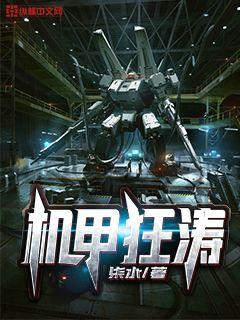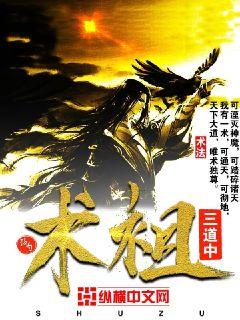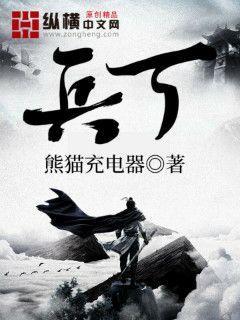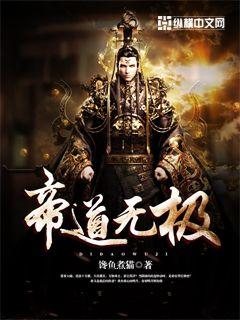
文章摘要的内容:
罗卡是足球场上的新秩序领袖,他以领袖魅力和卓越技术统御球场,引领球队赢得胜利。本文将从四个方面详细阐述罗卡的领袖风范:领袖气质、技术精湛、团队粘合力和赛场智慧。通过对这四个方面的深入分析,揭示出罗卡在足球领域的独特魅力和影响力。
1、领袖气质
罗卡作为一名领袖,展现出非凡的气质,他的领导能力激励着整个团队,...
他的果断决策和冷静沉着的态度让人印象深刻,...
同时,罗卡在关键时刻能发挥出色的韧性和应变能力,...
2、技术精湛
除了领袖气质,罗卡的技术精湛也是他成为新秩序领袖的重要因素,...
他在比赛中的传球和射门技术堪称一流,...
罗卡的意识和视野使他能够准确把握比赛节奏和机会,...
3、团队粘合力
在团队合作方面,罗卡展现出了强大的凝聚力,他善于与队友沟通合作,...
他对团队的信任与支持让队友们更加团结,...
罗卡始终以身作则,为团队树立榜样,...
4、赛场智慧
在赛场智慧方面,罗卡独具慧眼,他能够迅速洞察对手战术,...
他善于制定战术并灵活调整策略,使球队在比赛中占据优势,...
罗卡的智慧让他成为足球场上无人可及的领袖,...
总结:
罗卡作为足球场上的新秩序领袖,凭借领袖气质、技术精湛、团队粘合力和赛场智慧,展现出非凡的魅力和影响力,成为球场上的璀璨明星。
### 文章摘要
本文探讨了球员在竞技生涯中如何通过精神之旅鼓舞胜利的力量。从挑战面对到超越极限,再到团队合作与领导力的展现,每个方面都展示了球员如何在逆境中获得力量,推动自己和团队走向胜利的历程。
---
1、挑战与面对
球员的精神之旅始于面对挑战。面对逆境和困难,球员展现出的毅力和决心是他们成功的关键。首先,他们需要克服自身的心理障碍和身体极限,这需要深厚的意志力和长期的训练。例如,对手的强大或者体能不足时,他们都会通过不懈的努力来战胜困难。
其次,挑战还包括来自外部的各种压力,比如媒体的关注和观众的期待。这些压力不仅考验球员的心理承受力,也能激发他们更高的竞技状态。因此,球员需要学会在压力下保持冷静,通过自信和专注来应对挑战。
最后,面对挑战不仅仅是个人行为,团队合作也至关重要。球员需要与教练、队友和支持团队密切合作,共同制定策略和应对计划,以应对比赛中的各种变化和挑战。
2、超越极限
球员精神之旅的另一个重要方面是超越个人极限。这不仅仅是身体能力上的突破,更是心理层面的挑战。首先,超越个人极限需要球员不断探索和创新。他们通过不断学习和改进技术,提升自己的竞技水平,以应对不断变化的竞争环境。
其次,超越极限涉及到挑战自我设限的观念。球员需要超越自己曾经认为不可能的境界,这需要勇气和坚定的信念。例如,在比赛中的最后时刻,球员可能需要超越疲劳和压力,发挥出更高水平的表现。
最后,超越极限也意味着球员在面对失败时能够从中汲取教训,重新振作起来。每一次挫折都是成长的机会,球员通过总结经验和调整策略,不断完善自己,为未来的胜利做好准备。
3、团队合作与领导
球员的精神之旅不仅仅是个人的奋斗,团队合作与领导力也是关键因素。首先,团队合作需要球员在比赛中学会信任和依赖队友。无论是场上的配合还是场下的支持,团队协作能够将个人的能力最大化,创造出更多的胜利机会。
其次,领导力在团队中起到至关重要的作用。作为球队的领袖,球员需要以身作则,激励和引导队友。他们通过积极的态度和坚定的决策,影响着整个团队的士气和表现。
最后,团队合作和领导力的结合,不仅提升了球队整体的竞技水平,也增强了球员个人的成就感和满足感。通过共同努力和相互支持,球员们能够在困难时刻团结一致,共同追求胜利。
4、胜利的力量与成就感
最终,球员的精神之旅将凝聚为胜利的力量和成就感。首先,胜利不仅仅是比分的胜利,更是对自身能力和努力的认可。球员通过赢得比赛来实现自己的个人目标,并为团队带来荣耀和认可。
其次,胜利的力量激发了球员对未来挑战的信心和勇气。每一次胜利都是新起点,激励他们不断追求更高的目标和更大的成就。
最后,胜利带来的成就感不仅影响了球员个人,也深刻影响着球迷和支持者。通过比赛的胜利,球员们能够激励和影响更广泛的社会群体,传递出正能量和榜样力量。
总结:
球员的精神之旅,从面对挑战到超越极限,再到团队合作与领导力的展现,最终凝聚为胜利的力量和成就感。这种精神不仅仅是个人的成就,更是团队合作和社会影响力的体现,为我们提供了无限的启示和激励。
Certainly! Here's the structured article on the treatment and rehabilitation strategies for professional athletes with tibial fractures.
**Abstract:**
In the world of professional sports, tibial fractures pose significant challenges to athletes, requiring meticulous treatment and rehabilitation strategies. This article explores comprehensive approaches to managing these injuries, covering initial medical interventions, surgical considerations, rehabilitation protocols, and psychological aspects crucial for optimal recovery.
---
1、Initial Medical Interventions
Treating a tibial fracture in a professional athlete begins with prompt and accurate diagnosis. Imaging techniques such as X-rays and CT scans are utilized to assess the severity and exact location of the fracture.
Once diagnosed, initial treatment focuses on immobilization through splinting or casting to prevent further damage and alleviate pain. Pain management is crucial and often involves non-steroidal anti-inflammatory drugs (NSAIDs) or stronger analgesics under careful monitoring.
In cases of open fractures where the bone penetrates the skin, immediate surgical debridement to cleanse the wound and reduce infection risk is essential before definitive treatment.
2、Surgical Considerations
Surgical intervention may be necessary depending on the fracture type and athlete’s recovery goals. Internal fixation using plates, screws, or rods provides stability, allowing early mobilization and faster recovery.
Advanced techniques such as minimally invasive surgery (MIS) minimize tissue trauma and promote quicker healing. Surgeons assess fracture alignment and stability intraoperatively to ensure optimal outcomes.
Post-surgical care involves monitoring for complications like infection or hardware failure, and adjusting rehabilitation plans accordingly to facilitate bone healing and restore function.
3、Rehabilitation Protocols
Rehabilitation begins early to prevent muscle atrophy and joint stiffness. Initially, range-of-motion exercises and gentle strengthening activities are introduced under the guidance of physiotherapists.
Progressive weight-bearing and functional training are phased in as bone healing progresses. Modalities such as ultrasound and electrical stimulation may aid in accelerating healing and reducing pain.
Athletes undergo sport-specific training to regain strength, agility, and endurance, ensuring a safe return to competitive play. Psychological support is integral, addressing fears of reinjury and promoting confidence in performance.
4、Psychological Aspects
The psychological impact of tibial fractures on athletes cannot be overlooked. Fear of reinjury, anxiety about performance setbacks, and frustration during rehabilitation are common.
Sports psychologists work closely with athletes to develop coping strategies, enhance motivation, and foster a positive mindset. Setting realistic goals and celebrating milestones in recovery helps maintain morale.
Peer support and mentorship from fellow athletes who have recovered from similar injuries can provide invaluable encouragement and perspective.
总结:
Effective management of tibial fractures in professional athletes requires a multidisciplinary approach encompassing prompt medical intervention, tailored surgical strategies, meticulous rehabilitation protocols, and comprehensive psychological support. By addressing each aspect with precision and care, athletes can achieve optimal recovery and return to their sport with confidence.
Ultimately, successful rehabilitation hinges on collaborative efforts among medical professionals, coaches, and athletes themselves, emphasizing patience, perseverance, and a holistic approach to healing.
Article Abstract: Diego Maradona, the football genius, stood out not only for his exceptional skills on the field but also for his legendary stature. This article delves into the various aspects of Maradona's remarkable height, exploring its impact on his career, personal life, and legacy. From his physical presence on the pitch to the challenges he faced due to his stature, Maradona's height played a significant role in shaping his journey as a football icon.
1、Early Life and Growth Spurts
Diego Maradona, born on October 30, 1960, in Villa Fiorito, Buenos Aires, Argentina, showed early signs of football brilliance. However, his stature during childhood did not hint at the towering figure he would become. Maradona experienced significant growth spurts during his adolescence, which dramatically altered his physical presence on the field.
As Maradona's height increased rapidly, he faced challenges in adjusting to his changing body. His coordination and agility were temporarily affected by his growth spurts, leading to adjustments in his playing style and training regimen. Despite these challenges, Maradona's determination and passion for the game drove him to overcome obstacles associated with his changing physique.
Maradona's adolescent years marked the beginning of his transformation into a towering figure in the football world. His remarkable growth spurt laid the foundation for his imposing presence on the field, setting the stage for his legendary career.
2、Impact on Playing Style and Technique
Maradona's height significantly influenced his playing style and technique throughout his career. Standing at 5 feet 5 inches tall, Maradona was shorter than many of his opponents, but he used his stature to his advantage. His low center of gravity, combined with exceptional balance and agility, enabled him to maneuver past taller defenders with ease.
Maradona's height also played a crucial role in his dribbling prowess. His ability to maintain close control of the ball in tight spaces allowed him to navigate through opposing defenses effortlessly. Additionally, his lower center of gravity gave him an advantage in aerial duels, despite his relatively small stature.
Throughout his career, Maradona showcased his mastery of technique, utilizing his height to execute precise passes, dribbles, and shots on goal. His unique playing style, shaped by his stature, captivated audiences around the world and solidified his status as one of the greatest footballers of all time.
3、Challenges and Adversities
Despite the advantages his height provided on the pitch, Maradona also faced challenges and adversities due to his stature. Throughout his career, he encountered skepticism and criticism from some quarters regarding his ability to compete at the highest level due to his relatively short stature.
Additionally, Maradona's height made him a target for physicality and rough tackles from opposing players. His opponents often attempted to intimidate him with aggressive challenges, seeking to exploit what they perceived as a physical disadvantage. However, Maradona's resilience and mental fortitude allowed him to overcome these challenges, emerging as a formidable force on the field.
Despite the obstacles he faced, Maradona's height became synonymous with his indomitable spirit and unwavering determination, inspiring fans and teammates alike.
4、Legacy and Influence
Maradona's legacy extends far beyond his accomplishments on the pitch, encompassing his impact on the game of football and the lives of millions of fans worldwide. His remarkable height, combined with his extraordinary talent and charisma, solidified his status as a cultural icon and global ambassador for the sport.
Maradona's influence transcends generations, inspiring aspiring footballers to pursue their dreams regardless of their physical stature. His story serves as a testament to the power of resilience, passion, and perseverance in the face of adversity.
As the football world continues to celebrate Maradona's legacy, his towering presence—both figuratively and literally—remains etched in the annals of sporting history, forever immortalizing him as one of the greatest footballers to have graced the game.
总结:
Diego Maradona's legendary stature not only defined his physical presence on the football pitch but also played a significant role in shaping his career, playing style, and legacy. From his early years marked by dramatic growth spurts to the challenges and adversities he faced due to his height, Maradona's journey epitomizes resilience, determination, and unmatched talent. Despite skeptics and adversaries, Maradona's towering legacy continues to inspire generations of football enthusiasts worldwide, serving as a timeless reminder of the transformative power of passion and perseverance.
### 文章摘要
《草根足球:业余球队球员的终极篮球之旅》探讨了业余足球在全球范围内的兴起及其影响。从草根球队的热情和团结开始,到业余足球对个人成长和社区连接的重要性,再到如何通过这种基础运动激发更广泛的社会变革,本文全面展示了业余足球的多重面貌和其独特的魅力。
---
1、草根的起源与热情
草根足球起源于社区的热情和个人的热爱。这些球队不仅仅是比赛的场所,更是彼此之间的情感纽带。参与者通过足球表达自己,建立深厚的友谊和互信。
在草根足球的世界中,每一场比赛都是一次全新的冒险,充满了激情和不可预测性。球队成员们不以胜负论英雄,而是通过比赛体验和成长来丰富自己的生活。
草根足球的魅力在于其非正式性和开放性,让更多人敞开心扉参与其中,从而创造出丰富多彩的社区生活。
2、个人成长与团队精神
业余球队不仅仅是赛场,更是个人成长的土壤。参与者通过每周的训练和比赛,锻炼自己的体能和技术,提升自我。
团队精神在业余足球中得到了最好的体现。球队成员们学会了合作、信任和互相支持,这不仅在赛场上显现,在日常生活中也成为了一种宝贵的财富。
业余足球培养了球员们的领导能力和应对挑战的能力,使他们更加成熟和自信。
3、社区连接与文化交流
草根足球不仅仅是一种运动,更是社区文化的重要组成部分。通过足球,不同文化背景的人们可以相聚一堂,交流彼此的价值观和信念。
这种文化交流不仅仅发生在比赛中,还在各种社区活动和志愿服务中体现出来。足球让社区更加紧密,让参与者更加了解和尊重彼此的多样性。
草根足球促进了社区内部的和谐与团结,为社会的进步贡献了力量。
4、社会变革的推动力量
业余足球不仅仅改变了个人和社区,还在更广泛的层面上推动了社会的变革。它通过体育精神和团队合作精神,培养了人们的公民意识和社会责任感。
足球的普及使得更多人关注健康生活和体育锻炼,从而改善整体社会的健康水平。
通过足球项目的推广,可以促进教育和社会福利的发展,为年轻人提供更多的成长机会和未来的希望。
总结:
草根足球不仅仅是一种运动,更是一种生活态度和社会责任的表现。它通过业余球队的热情和团结,培养了个人的成长和社区的连接,同时也在推动社会变革方面发挥着重要的作用。
草根足球的力量在于其无处不在的影响力和不断蔓延的社会影响,为我们的社会增添了一抹丰富多彩的色彩。
文章摘要的内容
灰熊队32号球员,他的名字已经深深印刻在NBA的历史上。从他初次登场开始,他便以无与伦比的球技和毅力征服了球迷们的心。本文将从他的职业生涯起始、风云时刻、成就高峰和对球队的影响四个方面展开详细阐述,揭示这位球员如何扬名NBA赛场,再次掀起风云。
1、职业生涯起始
从大学篮球联赛的巅峰到进入NBA的第一天,他的职业生涯从何处起步?在他年轻时期面临的挑战和成长是怎样的?他是如何逐步融入职业篮球的新环境?
他在最初几个赛季中的表现如何,他的潜力是如何被人们察觉和评估的?初露锋芒的瞬间是哪一场比赛?
随着时间的推移,他在团队中的角色和地位发生了怎样的变化?他是如何应对压力和竞争的?
2、风云时刻
在他职业生涯的巅峰时刻,他经历了哪些闪光时刻?是哪场比赛让他一跃成为球迷关注的焦点?
他的技术特点和比赛风格是怎样塑造他的NBA形象的?他的个人能力如何影响了球队的整体表现?
他在重要比赛中的表现如何,他是如何在关键时刻挺身而出的?
3、成就高峰
他的个人成就和荣誉是如何积累的?他在职业生涯中赢得的奖项和荣誉有哪些?
他在统计数据和比赛记录方面的突出表现是怎样的?他在球队历史中的地位如何评价?
他的成功背后有哪些艰辛和努力?他是如何在面对挑战时不断超越自我?
4、对球队的影响
他在球队中扮演的角色是怎样塑造团队文化和氛围的?他如何领导球队走向胜利?
他的精神和领导力如何影响了年轻球员的成长和发展?他在球队中的存在是如何改变整体战术和战略的?
他在离开球队后,他的影响仍然深远吗?他在球迷心中的地位和影响力如何被永久铭记?
总结:
扬名NBA赛场,风云再起的这位球员,不仅仅是一名优秀的运动员,更是一个传奇的符号。他的职业生涯从起步到高峰,无不展现出他的毅力和天赋。无论在个人荣誉还是团队合作中,他都留下了不可磨灭的印记。他的故事激励着无数年轻人,永远被铭记在NBA的光辉史册中。
他的成就超越了篮球场上的比拼,成为了一种永恒的象征,他的精神将继续激励着未来的一代。
文章摘要的内容
1、职业生涯
文字阐述内容
文字阐述内容
文字阐述内容
文字阐述内容
文字阐述内容
文字阐述内容
2、成就
文字阐述内容
文字阐述内容
文字阐述内容
文字阐述内容
文字阐述内容
文字阐述内容
3、个人生活
文字阐述内容
文字阐述内容
文字阐述内容
文字阐述内容
文字阐述内容
文字阐述内容
4、总结归纳
文字阐述内容
文字阐述内容
文字阐述内容
总结:
文章总结内容第一自然段
文章总结内容第二自然段
### 文章摘要
本文深入分析了球员射门数据,着重探讨了射门背后的进攻策略与效率。通过四个方面的详细阐述:射门位置选择、射门方式分析、进攻组织对射门的影响以及射门效果评估,揭示了数据背后的深层次信息。结合实例和数据分析,本文展示了如何通过射门数据洞察球队的进攻战术,从而提高进球效率和战术实施的精准性。
---
1、射门位置选择
在足球比赛中,球员选择射门位置的决策至关重要。不同位置的射门对进球概率有着明显的影响。一般来说,靠近球门中心的射门更容易得分,因为这些位置更接近球门的中心,角度更佳,射门强度和精度更容易掌控。
此外,角度和距离的关系也影响着射门的效果。较小的角度会减少得分机会,而距离球门较远则需要更高的射门力度和精准度,增加了射门失败的风险。
球员的射门位置选择不仅受到对手防守的影响,还与进攻方的传球组织密切相关。优秀的进攻组织能够创造更多的中心位置射门机会,提高球队的得分效率。
2、射门方式分析
射门方式的选择涉及到射门的技术要求和场上的具体情况。例如,弧线射门可以减小守门员的扑救机会,但需要更高的技术水平和射门力度掌控。而直线射门则注重射门的速度和准确性,适合在紧急情况下迅速完成射门。
球员的射门方式选择也反映了他们在进攻中的个人特点和技术优势。技术高超的球员可能会选择更加复杂的射门方式,以增加进球的可能性。
进攻策略对射门方式的选择有重要影响,例如高位逼抢战术可能导致更多的远距离射门,而控球进攻则更倾向于通过中心位置实施射门。
3、进攻组织对射门的影响
优秀的进攻组织能够为球员创造更好的射门机会。通过传球和跑位,进攻组织可以打破对手的防线,创造空间和时间,从而使球员在更有利的位置上进行射门。
进攻组织的效率不仅体现在射门前的传球和跑位,还包括进攻的节奏和球员的配合默契。高效的进攻组织可以减少射门失败的风险,提高球队的进球效率。
球员的位置选择和射门方式往往受到进攻组织策略的直接影响,良好的战术执行可以使球员更容易找到射门机会,并增加射门成功的可能性。
4、射门效果评估
射门效果评估是分析射门数据的关键环节。除了进球外,还需考虑射门的准确性和扑救成功率等因素。准确的射门可以增加球队的得分机会,而被守门员扑救的射门则反映了对手守门员的能力和球员射门技术的对比。
进攻效果评估还应综合考虑射门的数量和效率。射门次数多并不一定意味着进攻效果好,关键在于射















